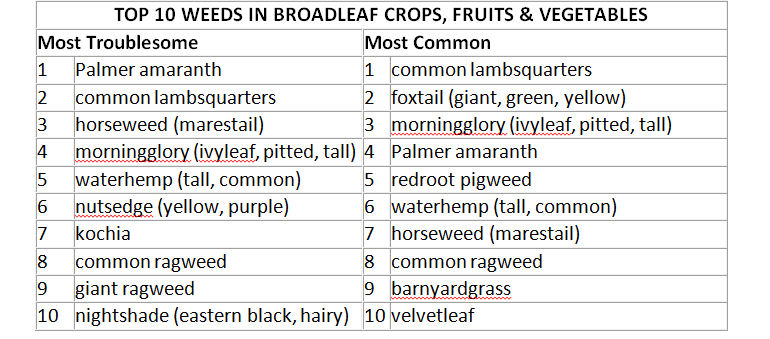Surveys and ratings sometimes offer surprises. Other times they offer the assurance and confirmation of something you thought was true and now you know for sure. In 2016, the Weed Science Society of America conducted a survey to identify the most common and most troublesome weed in 12 categories of broadleaf crops and fruits and vegetables.
The winner of the “most common” category is common lambsquarters. It’s everywhere and, while relatively easy to control, has developed its share of resistance to products like the triazine class of herbicides. Other “common” weeds include foxtail (giant, green and yellow) and morningglory.
Also confirming what many probably already knew, Palmer amaranth is No. 1 as the “most troublesome” weed.
“Palmer amaranth was not even a top 10 weed in the 1970s,” says Lee Van Wychen, science policy director for the National and Regional Weed Science Societies. “But it won the weed evolution lottery with its ability to resist glyphosate.”
You can see the ranking of most troublesome and most common on the list below:

The survey included responses from nearly 200 weed scientists across the U.S. and Canada. This is the second such survey conducted by the group. The first was a baseline study in 2015 that explored the most common and troublesome weeds in 26 different crop and non-crop areas. This was a “global” survey.
For 2017, scientists are being asked about the most troublesome and most common weeds in grass crops, which will be available in early 2018. A survey about aquatic plants will be conducted in 2018 for release in 2019. Anyone interested can download the dataset from the 2015 survey at wssa.net/wssa/weed/surveys.
Source: Delta Farm Press